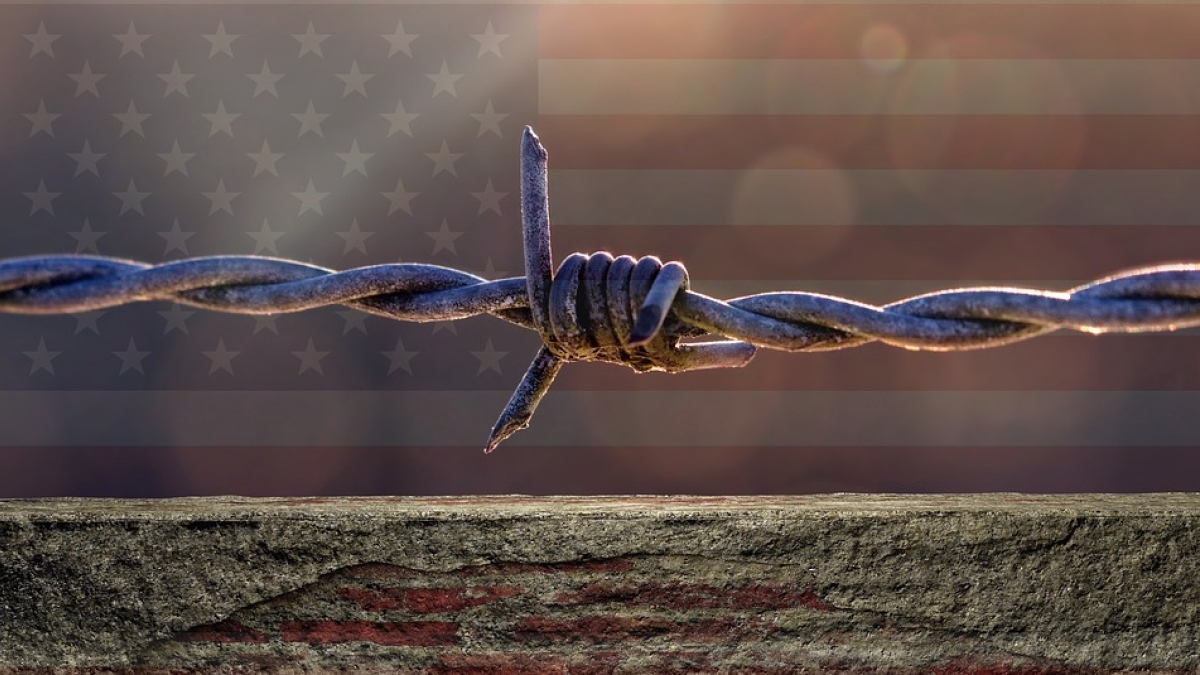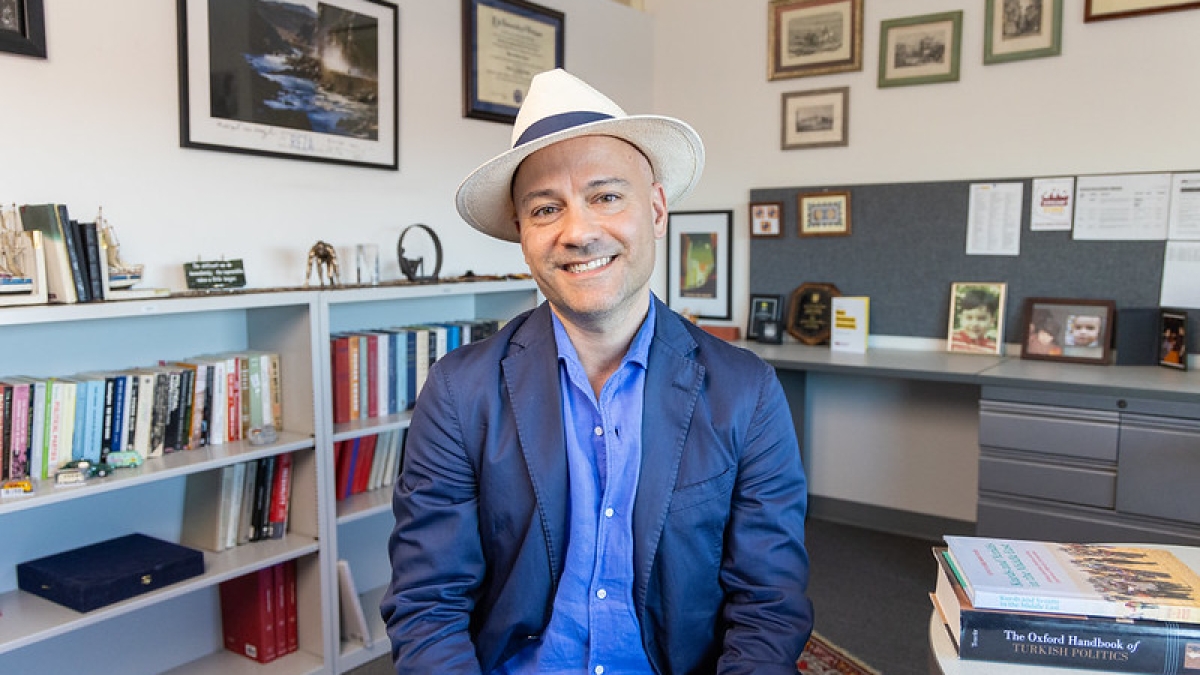New book explores fraught history of Arizona immigration
Co-authors of narrative nonfiction book that looks at former Sheriff Joe Arpaio will speak at Cronkite School

Former Maricopa County Sheriff Joe Arpaio was voted out of office in 2016, after 24 years as the county’s top cop. The following year he was found to have committed criminal contempt of court and received former President Donald Trump’s first pardon. Arpaio lost two subsequent primary elections — a bid for the Senate nomination in 2018 and a race to regain his old sheriff’s seat in 2020.
The life of the man once known as “America’s Toughest Sheriff” takes a literary turn in the spotlight in a new book called “Driving While Brown: Sheriff Joe Arpaio versus the Latino Resistance,” which explores this fraught chapter in Arizona’s immigration history. Written by Terry Greene Sterling and Jude Joffe-Block, the character-driven narrative nonfiction examines how Arpaio’s relentless immigration enforcement catalyzed a generation of young Latinos to become activists, run for office and make meaningful systematic change.
Greene Sterling, a longtime Arizona journalist, is the writer-in-residence at Arizona State University’s Walter Cronkite School of Journalism and Mass Communication and the editor-at-large for the Arizona Center for Investigative Reporting. Joffe-Block, a veteran journalist who currently works for the Associated Press, has previously reported for public radio, print and podcasts.
The book is garnering national media attention and will be discussed on "Arizona Horizon" on Arizona PBS on April 16.
Southwest Borderlands Initiative Professor Rick Rodriguez also will lead a discussion with the co-authors on April 19 during the Cronkite School’s virtual “Must See Mondays” lecture series. Register for the Must See Mondays presentation.
Greene Sterling and Joffe-Block recently spoke to ASU News about Arpaio's legacy and the state’s hard-fought immigration battles.
Authors Terry Greene Sterling (left) and Jude Joffe-Block
Question: Given that you’ve covered this issue so extensively as a journalist, why did you think it would make for a compelling book, and why did you feel as if you needed a collaborator for this project?
Terry Greene Sterling: You’re right. I have reported and written Arizona immigration stories off and on for three decades. As a staff writer at Phoenix New Times, I reported on Afghan refugees in downtown Phoenix, a man from El Salvador with crippling PTSD and Latino immigrants living in citrus orchard communities. My first book, "Illegal," published in 2010, profiles several Maricopa County immigrants, including a gay man who crossed the border after being pelted with rocks in his socially conservative Mexican village and a poorly compensated dairy-farm worker who could doctor a cow as well as a vet. I also devoted a chapter to then-Maricopa County Sheriff Joe Arpaio, whose deputies swept neighborhoods and raided workplaces in search of unauthorized immigrants.
All of the above, along with increased awareness of an ongoing federal class action civil rights case, Melendres v. Arpaio, in which Latino motorists alleged they were the targets of Arpaio’s unconstitutional policing in immigration-themed traffic stops, made me want to write a political biography of Arpaio. In 2011 and 2012, two New York agents tried but could not sell the book idea to publishers. I was still hooked, regardless of the rejections.
While in the federal courthouse covering the Melendres case for National Journal Magazine in 2012, I met a delightful KJZZ reporter named Jude Joffe-Block. She shared my unbridled enthusiasm for a book that would chronicle this moment in history and what it meant not only to Arizona, but to the nation. And that’s why we decided to become co-authors!
Q: Jude, given that you were essentially in competition with Terry, what were the reasons you joined forces with her, and what storytelling aspects or perspective did you feel that you could bring to the book?
Jude Joffe-Block: Terry and I were both covering the Melendres racial profiling lawsuit against Arpaio in federal court, but I was covering it as a public radio journalist — sometimes in a daily, breaking-news capacity — while she was popping in and out and writing longer-form pieces. I think many of us who were reporting on that case felt a sense of solidarity; we were in a way all on the same team in the back bench of the courtroom — trying to understand and get to the truth of what was going on. There were times that a few of us from different outlets banded together to get access to certain court hearings or documents.
As Terry mentioned, we both believed in a book that detailed the history we were witnessing in the courtroom, and the larger historical context that had shaped the moment. So I was very excited when we started discussing co-authoring a book together. Terry and I have different styles and strengths as journalists, and we found our skill sets complemented each other.
I was able to attend almost every court hearing in the Melendres case and the criminal contempt case against Arpaio that spun out of it, for five years, between 2012 and 2017. I brought that perspective to the book project, along with years of covering other lawsuits named in the book, such as the litigation over (Arizona) Senate Bill 1070 and Arpaio’s worksite raids.
Q: Your book goes out of its way to explain what shaped Arpaio. His mother died at a young age, and his father was distant. It appeared as if he had no nurturing growing up, which gave him a real “I’ll show you” chip on his shoulder. Why was it important to show this side of the man?
Greene Sterling: Arpaio was a lonely kid. Praise didn’t come easily from his father, who eventually remarried and had another son. Amid the stepfamily complications, Arpaio struggled in school. He joined the Army when he graduated from high school, further disappointing his father by not attending college. Later, Arpaio chose a career in federal drug enforcement. In 1963 Arpaio was quoted in newspapers for his role in a big drug bust in Turkey. This media mention pleased Arpaio’s father, who uncharacteristically praised his firstborn son. From then on Arpaio sought validation in the press. Once, when he was getting a lot of media attention at the Arizona GOP headquarters, and I was standing by taking notes for the book, he told me wistfully he only wished his dad could see him now.
Arpaio’s dad, an Italian immigrant, came to the United States in 1923 — during a cycle of anti-immigrant animus perpetuated by the eugenics movement. Eugenicists were white supremacists and believed northern European immigrants were the most desirable immigrants of all. In their view, southern European immigrants, including Italians like Arpaio’s dad, were undesirables. As a kid, Arpaio was teased and taunted for his Italian DNA.
Many decades later, Arpaio began apprehending unauthorized immigrants after it became politically popular in Maricopa County. He did this despite his early childhood experiences as the son of an immigrant. The tables had turned. The son of an unwanted immigrant now hunted unwanted immigrants. I have always found this sadly fascinating.
Q: Another surprising revelation in the book was the fact that Arpaio was not only embraced by voters when he initially ran for sheriff, but received a warm reception from Hispanic leaders and a ringing endorsement from The Arizona Republic. When did his focus shift to making immigration his chief priority?
Joffe-Block: As we document in the book, for the first half of Arpaio’s tenure, he was famous for his tough treatment of jail inmates — not immigration enforcement. There were countless news stories about the unappealing food he served inmates, the pink boxer shorts he made them wear and the outdoor tents they slept in. He had a very friendly relationship with Mary Rose Wilcox, who for years served as the sole Latina and Democrat on the Maricopa County Board of Supervisors. She thought of him as an ally and invited him to community events with kids in her district. In 2005, as the movement of Arizonans interested in cracking down on unauthorized immigration was growing, Arpaio did not instantly join the cause. Instead, he made a few high-profile decisions that year that put him on the opposite side of that growing movement and caused Latino leaders to thank him.
But in 2006, after a new state law took effect that made smuggling migrants into Arizona a state felony, Arpaio partnered with the county attorney at the time, Andrew Thomas, to enforce an even stricter interpretation of the new law. That interpretation, which was later found unconstitutional, meant Arpaio instructed his deputies to arrest migrants for conspiracy to smuggle themselves — also a felony. That was the beginning of Arpaio’s pivot on immigration, and he kept ramping up from there: a federal partnership that allowed his deputies to enforce federal immigration laws, roundups of day laborers, neighborhood sweeps that led to arrests of undocumented drivers and passengers discovered in traffic stops, and worksite raids to arrest unauthorized immigrant workers. Arpaio says he changed course because he had a duty to enforce Arizona’s laws. It is worth noting though, that Arpaio used the immigration enforcement tools that were available to him more exuberantly than any other law enforcement agency in the state. For many years he was rewarded politically for his stance on immigration, since a powerful faction of his party demanded it. The issue also got Arpaio on national news shows and helped him fundraise from a national base.
Q: What was Joe Arpaio’s ultimate downfall, and what can we learn from this?
Greene Sterling: Joe Arpaio is approaching his 89th birthday, and he will tell you he’s not had a “downfall.” He believes this even though he was voted out of the sheriff’s office in 2016, lost a 2018 primary race for the U.S. Senate and lost a 2020 primary bid for his former post as Maricopa County sheriff. He was also found in the courts to have racially profiled Latino drivers and passengers, and to have engaged in criminal contempt of court. He was spared the remote possibility of a short jail sentence by a pardon from a guy he deeply admires — former President Donald Trump.
It’s hard to square all this with the fact that Arpaio was once an exceedingly popular and powerful Arizona politician. To many he was a hero, or at the very least, an amusing guy who humiliated jailhouse inmates by forcing them to wear pink underwear or sleep in tents. To his foes, though, he was a vindictive bully who cemented his power by unleashing his law enforcement agency on his critics, including judges, lawyers, journalists and civil rights activists.
Few wanted to take on Arpaio at the height of his power. But a fearless and relentless Latino resistance stood up to him for years in the streets, in the courts and in the public square. From a macro level, this led to Arpaio’s fall from grace. On a micro level, Arpaio’s deep need for approbation, that hole inside him that seemed never to be filled, contributed to what many see as the unraveling of “America’s Toughest Sheriff.”
Q: Does the current situation at the Arizona-Mexico border give your book added relevance given that the issue of immigration has reared its head again in this state?
Joffe-Block: In the 1990s and 2000s, the number of migrants attempting to cross the Mexico-Arizona border increased, and a growing number of Arizonans felt the federal government had failed to secure the border. That helped fuel hardline state policies and (caused) local politicians like Arpaio to focus on immigration.
While some of the rhetoric we are hearing today about the state of the border is the same, the details are different. Now we are seeing families and children arriving from Central America, many of whom are fleeing violence and natural disasters. Many are turning themselves in to border officials to ask for asylum. But nevertheless, history has taught us that migrants arriving at the border can breed fear, resentment and outrage among the American public, and some politicians will seize on the issue. Such a dynamic can drive new cycles of hardline immigration enforcement tactics, and those tactics could lead to constitutional violations — as we saw happen in Maricopa County.
As the Biden administration grapples with how to handle the current situation at the border and deliver its promise of long-awaited comprehensive immigration reform, our book gives readers the historical context to understand what led up to this moment.
Top photo courtesty of Pixabay
More Law, journalism and politics

School of Politics and Global Studies director's new book explores mass violence
Why do people commit atrocities and why are certain groups, including religious and ethnic, more vulnerable to large-scale violence? These questions are explored in a new book by Güneş Murat Tezcür…

ASU faculty contributing to improvement of Wikipedia
Many academics have a love-hate relationship with Wikipedia. While the website has information about almost anything you can imagine, the credibility of that information is sometimes suspect. Tracy…

ASU Law students gain vital experience through Los Angeles location
Students at the Sandra Day O’Connor College of Law at Arizona State University may be concentrated in the school’s downtown Phoenix headquarters, but they have more choices than ever when it comes to…
